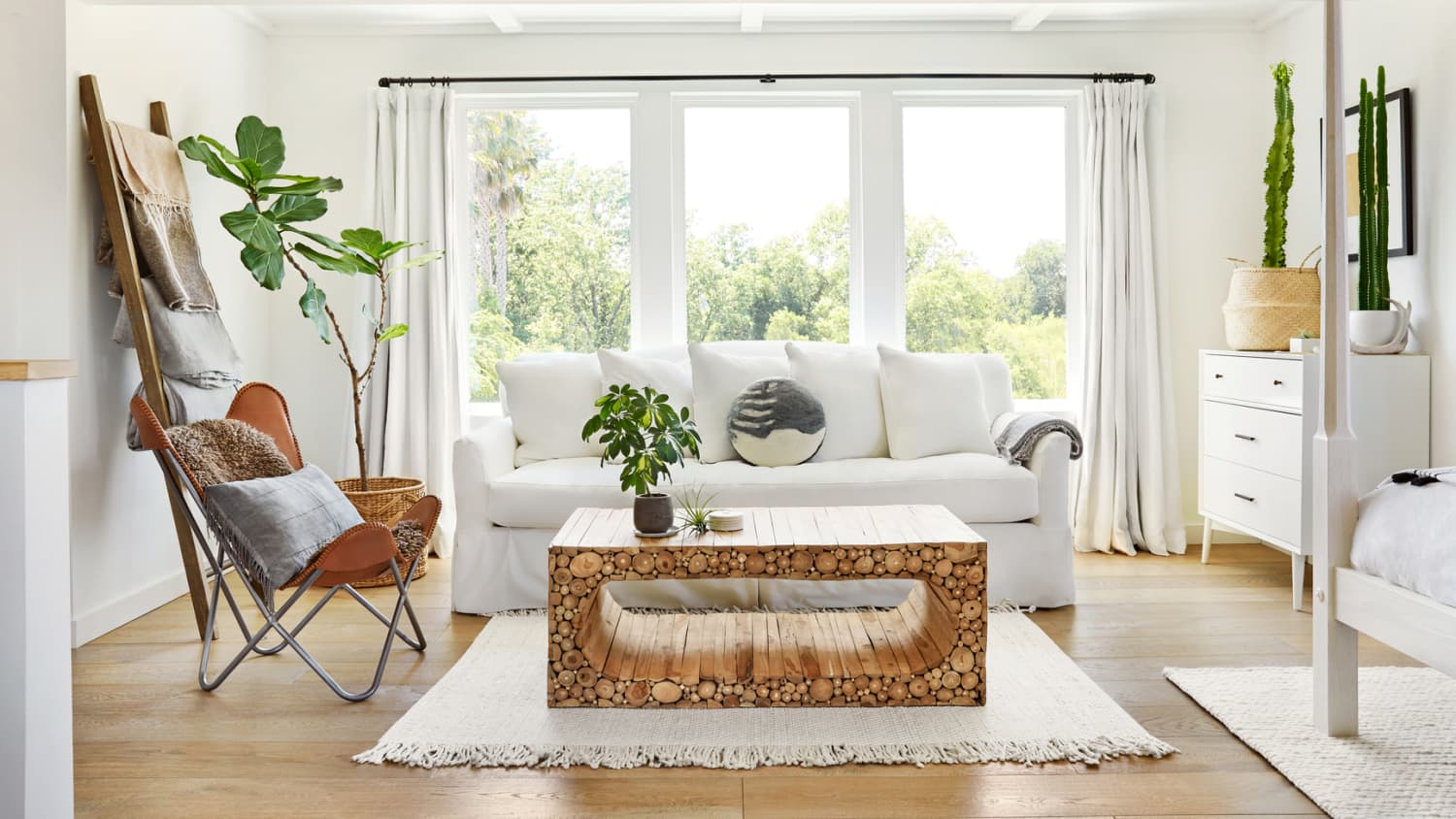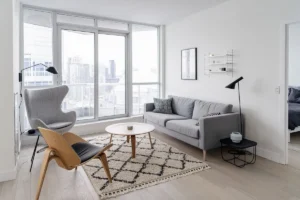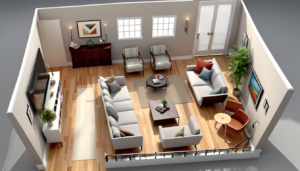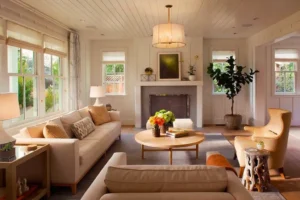Your living room is the hub of your home—a place where comfort meets style and where you and your guests spend countless hours relaxing, entertaining, and making memories. However, achieving a space that is both cozy and visually appealing can be a challenge. Many homeowners unknowingly fall into common design traps that can detract from the functionality and aesthetic of their living rooms. In this post, we’ll dive deep into 9 common living room design mistakes and offer practical solutions to help you create a space that’s as inviting as it is beautiful.
On This Page
Living Room Design Mistakes to Avoid:
Poor Furniture Layout
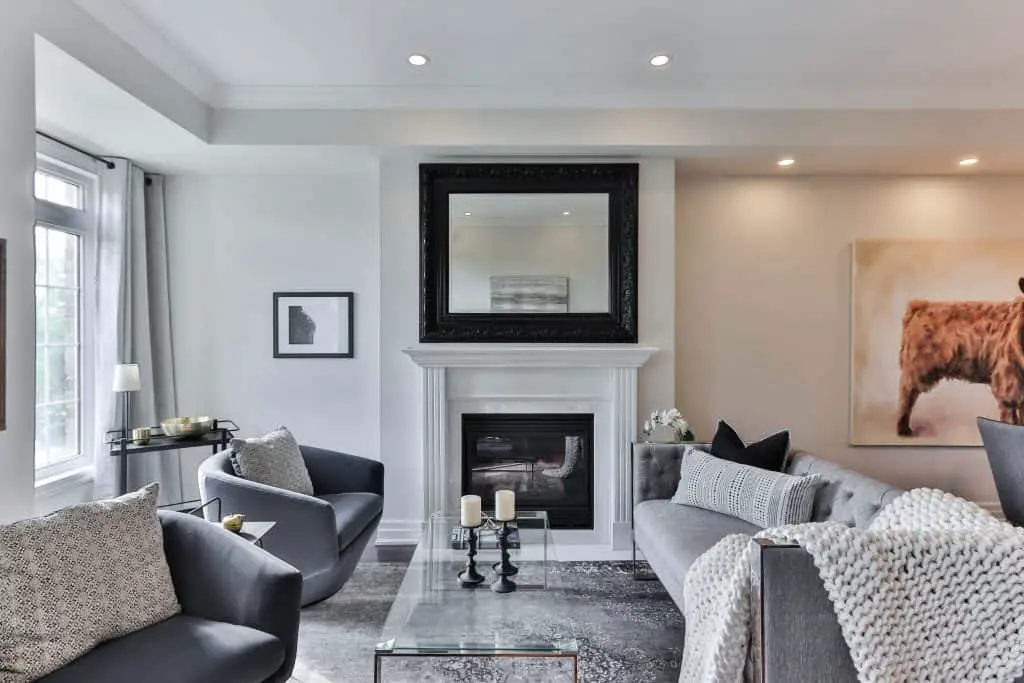
Mistake: One of the most common mistakes in living room design is arranging furniture in a way that doesn’t support the room’s activities or flow. Many people spread seating too far apart or push all the furniture against the walls, which can make the space feel disconnected and less cozy.
Solution: To create a welcoming and functional layout, start by identifying the room’s focal point—whether it’s a fireplace, a large window, or a TV—and arrange the furniture around it. Aim to position seating at a conversation-friendly distance, ideally close enough to encourage interaction but not so close that it feels cramped. Consider floating your furniture pieces on a large area rug in the center of the room to define the space and bring everything together. If your room is small and floating furniture isn’t possible, focus on maintaining a cohesive arrangement that facilitates conversation and togetherness.
Prioritizing Style Over Comfort
Mistake: It’s easy to be drawn to furniture that looks stylish but isn’t necessarily comfortable. For example, curved shapes, leather finishes, or button-tufted upholstery might catch your eye, but they might not provide the level of comfort needed for a space where you spend a lot of time.

Solution: Consider the primary purpose of your living room. If it’s a formal space that’s rarely used, you might prioritize style over comfort. However, for a family room or a space where you spend a lot of time lounging, watching TV, or hosting gatherings, comfort should be your top priority. Opt for fully upholstered pieces with soft, cozy fabrics and smooth, cushiony seating surfaces that are easy to clean. Don’t be afraid to mix styles—combine a few comfortable, lounge-friendly pieces with more structured ones to balance style and comfort.
Mounting the TV Too High
Mistake: A common mistake is placing the TV too high, often above a mantle. This positioning can cause neck strain and make viewing uncomfortable, especially during long sessions.
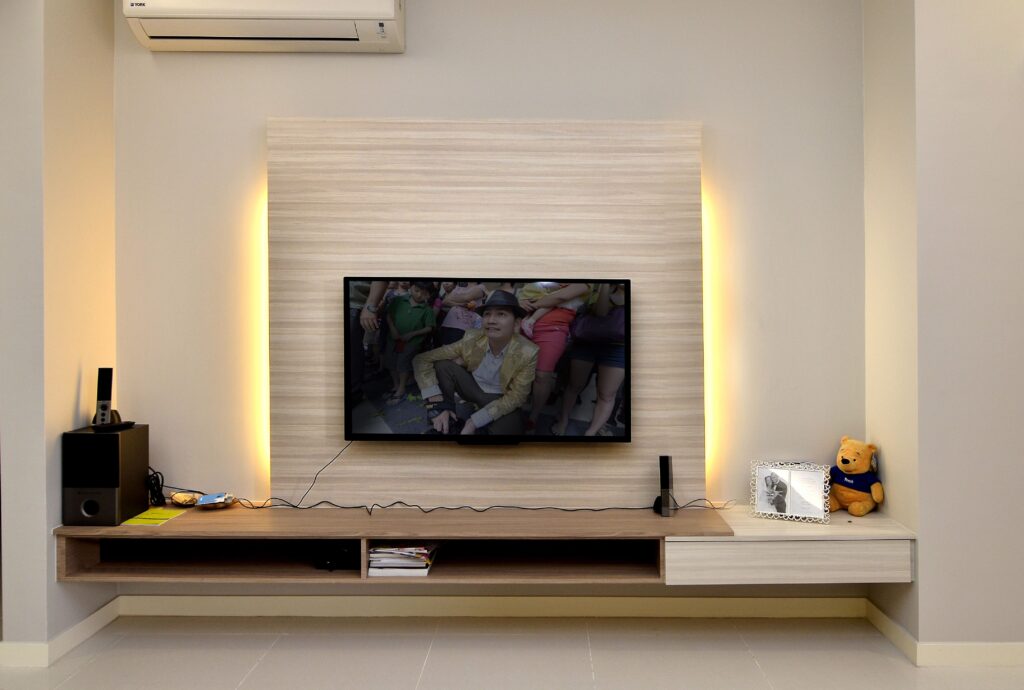
Solution: The ideal height for a TV is about 42 inches (107 cm) from the floor to the center of the screen. This height places the screen at eye level when you’re seated, reducing strain and providing a more enjoyable viewing experience. If your TV shares space with a fireplace and you have no choice but to mount it higher, consider moving it to the side or investing in a picture frame TV that doubles as artwork when not in use, helping it blend seamlessly into the room’s decor.
Lack of Tables
Mistake: Not having enough surfaces, such as coffee tables or side tables, can make your living room feel incomplete and less functional. Guests and family members may struggle to find a place to set down drinks, snacks, or books.
Solution: Ensure there’s a sufficient number of tables in your living room to enhance comfort and convenience. A central coffee table is a must, providing a surface for decorative vignettes or functional storage. In addition to a coffee table, consider adding smaller side tables or versatile c-tables that can be easily moved around the room. These additional surfaces will make your living space more user-friendly and comfortable.
Relying Solely on Overhead Lighting
Mistake: Using only overhead down-lighting can create a cold, harsh environment, casting unflattering shadows and making the room feel less inviting.
Solution: To create a warm, welcoming atmosphere, layer different types of lighting. Start with ambient lighting like wall sconces or table lamps to create a soft, diffused glow. Combine these with task lighting, such as floor lamps, to provide direct light where needed, like near a reading chair. If overhead lighting is necessary, put it on a dimmer switch to control the intensity. Additionally, choose warmer bulbs with a color temperature around 2700 Kelvin or lower to make the room feel cozy and intimate.
Ignoring Scale and Proportion
Mistake: Furnishing a room with pieces that are all at the same height or using furniture and decor that are out of proportion with each other can make the space feel flat and unbalanced.
Solution: Create visual interest by varying the heights of your furniture and decor. For instance, pair shorter pieces like sofas or low tables with taller items like floor lamps, tall plants, or wall art. This variation in height draws the eye around the room, creating a dynamic, engaging environment. Follow the 2/3 rule for proportions—choose a coffee table that’s about 2/3 the length of your sofa and apply the same principle when hanging artwork over furniture. This ensures that the elements in your room are balanced and harmonious.
Using a Too-Small Area Rug
Mistake: A rug that’s too small can make your living room feel disjointed and can even make the space appear smaller than it is.
Solution: Choose a rug that’s large enough to anchor the space. Ideally, all the furniture in the living room should fit comfortably on the rug. If that’s not possible, at least ensure that the front legs of all seating pieces are on the rug, with an additional 8 inches (about 20 cm) of rug extending beyond the edges of the furniture. A properly sized rug ties the room together and provides a visual foundation for the space.
Not Layering Your Design
Mistake: Filling your living room with random decor items without considering layers can leave the space feeling unfinished and lacking in depth.
Solution: Think of your living room in layers, starting with the foundational elements like rugs and draperies, which soften the hardness of floors and walls. Next, bring in your comfortable furniture pieces, arranged to encourage conversation and comfort. Finally, add the finishing touches—lamps, pillows, throws, pottery, plants, and artwork. These accessories reflect your personal style and add warmth, texture, and personality to the room. Layering these elements thoughtfully creates a well-rounded, inviting space.
Neglecting Personal Touches
Mistake: Simply filling the room with random items without considering how they contribute to the overall feel can result in a space that lacks character and warmth.
Solution: Curate your decor selections carefully. Choose pieces that reflect your style and tell a story—whether it’s a collection of family photos, a favorite piece of artwork, or a unique vase you picked up on a trip. These personal touches add depth and meaning to your living room, making it not just a stylish space but one that feels uniquely yours.
By avoiding these common living room design mistakes and implementing these thoughtful solutions, you can transform your space into a comfortable, inviting haven that you, your family, and your guests will love spending time in. What are your biggest living room design challenges? Share your thoughts and experiences in the comments below!
